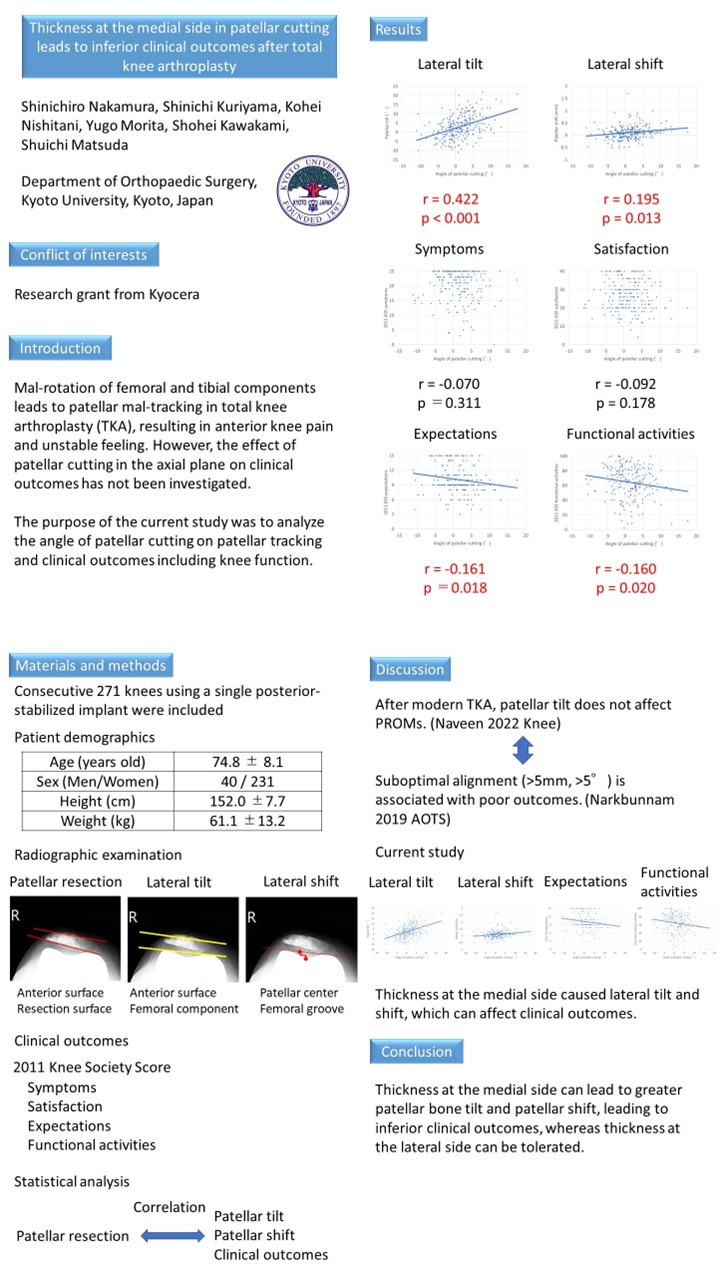Description
Objectives: Mal-rotation of femoral and tibial components leads to patellar mal-tracking in total knee arthroplasty (TKA), resulting in anterior knee pain and unstable feeling. However, the effect of patellar cutting in the axial plane on clinical outcomes has not been investigated. The purpose of the current study was to analyze the angle of patellar cutting on patellar tracking and clinical outcomes including knee function.
Methods: Consecutive 271 knees were included in the current study. The patella was routinely resurfaced regardless of the status of the patellofemoral joint, and single posterior-stabilized implant was used. In the merchant view, the patellar cutting angle, patellar tilt, and patellar shift were measured. Medial thickness of the patella, lateral tilt of patella, and lateral shift were denoted as positive (Figure 1). Knee scoring was conducted using the Knee Society Score (KSS) and the new KSS (2011 KSS) at two years after TKA. Correlation between the angle of patellar cutting and patellar tilt, patellar shift, and clinical outcomes was calculated.
Results: The angle of patellar cutting was positively correlated with the patellar tilt (r = 0.422, p < 0.001) and patellar shift (r = 0.195, p = 0.001) (Figure 2). There were no correlations with the angle of patellar cutting and KSS. The angle of patellar cutting was negatively correlated with 2011 KSS expectations (r = 0.161, p = 0.018) and functional activities (r = 0.160, p = 0.020) (Figure 3).
Conclusion: Thickness at the medial side can lead to greater patellar bone tilt and patellar shift, leading to inferior clinical outcomes, whereas thickness at the lateral side can be tolerated.




